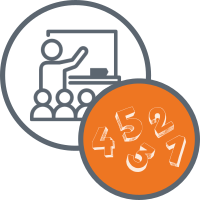You are here
Equity-Based Mathematics Teaching Practice 1: Going Deep With Mathematics
Instructional Support Menu
Going Deep With Mathematics
Shallow mathematics instruction that focuses on “the basics” is one of the primary ways students receive inequitable instruction. This problem is well-documented among students from underrepresented populations (TNTP, 2018).
The Practice in Action
Aguirre, Mayfield-Ingram, and Martin (2013, pp. 43-48) summarize the practice of going deep with mathematics by describing what it does and doesn't look like in a lesson, considerations for assessment, and questions for teacher reflection.
Caution! Don't over-estimate your own understanding based on these brief descriptions of teaching practice. Professional educators should dig more deeply into related resources, join study groups and professional networks, and seek out professional development and coaching to ensure high-quality engagement in the practice.
A representative lesson
- Supports students in analyzing, comparing, justifying, and proving their solutions.
- Engages students in frequent debates.
- Presents tasks that have high cognitive demand and include multiple solution strategies and representations.
A non-representative lesson
- Promotes memorization without examination.
- Encourages students to follow procedures step by step.
- Presents tasks that have low cognitive demand and emphasize one solution strategy.
Assessment considerations
- A task:
- Requires demonstration of multiple strategies or representations.
- Involves analysis and justification.
- Communication:
- Offers meaningful feedback that draws students’ attention to “making sense” of the mathematics.
- Focuses on moving students’ thinking forward.
Questions for reflection
- How does my lesson promote mathematical analysis?
- How do I support students in closely examining the math concept?
Resources
- The Impact of Identity in K-8 Mathematics: Rethinking Equity-Based Practices by Aguirre, Mayfield-Ingram, & Martin (2013)
- The Opportunity Myth by TNTP (2018)




Connect With Us





